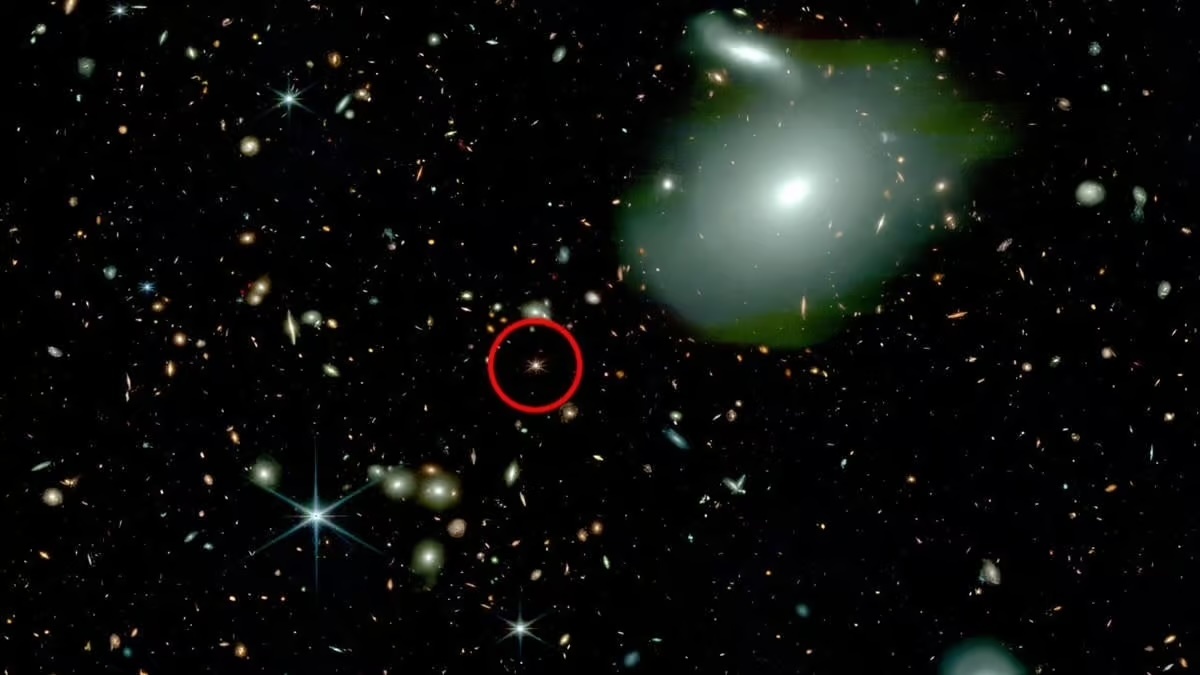22.10.2024
A new study has revealed that some quasars were surprisingly alone in the early universe, confounding astronomers.

This image, taken by NASA’s James Webb Space Telescope, shows an ancient quasar (circled in red) with fewer than expected neighboring galaxies (bright blobs), challenging physicists’ understanding of how the first quasars and supermassive black holes formed. Credit: Christina Eilers/EIGER team.
Quasars are the extremely bright core of a galaxy which hosts an active supermassive black hole. As the black hole draws in surrounding gas and dust, it releases a tremendous amount of energy.
That quasars have been found in the first few hundred million years after the Big Bang – when the universe was only a few percent of its current age – has long confounded astronomers.
It was previously believed that the earliest quasars might have formed in very dense regions of primordial matter which also formed early, small galaxies in the quasar’s vicinity.
But the new research, published in the Astrophysical Journal, shows some early quasars were strangely very alone.
Using data from the James Webb Space Telescope (JWST), the researchers observed 5 ancient quasars from more than 13 billion years ago. Astronomers estimate that the quasars formed between 600 and 700 million years after the Big Bang.
Some of them were in very crowded regions, while others appeared to drift in very empty parts of space with only a few stray galaxies in the surrounding area.
“Contrary to previous belief, we find on average, these quasars are not necessarily in those highest-density regions of the early universe,” says first author Anna-Christina Eilers, assistant professor of physics at MIT. “Some of them seem to be sitting in the middle of nowhere.”
“It’s difficult to explain how these quasars could have grown so big if they appear to have nothing to feed from.”
Eiler notes that everything else about the quasars is virtually identical.
“For instance, one quasar has almost 50 galaxies around it, while another has just 2,” Eiler says. “And both quasars are within the same size, volume, brightness, and time of the universe. That was really surprising to see.”
It’s possible the quasars aren’t as lonely as they appear. There could be galaxies around them which are heavily shrouded in dust and gas hiding them from view.
But the new study places questions over our understanding of how the first structures in the universe formed.
Physicists theorise that, shortly after the Big Bang, filaments of dark matter formed, attracting gas and dust. In the densest regions of this dark matter web, matter accumulated to form objects like stars, quasars and galaxies.
“The cosmic web of dark matter is a solid prediction of our cosmological model of the universe, and it can be described in detail using numerical simulations,” says co-author Elia Pizzati, a graduate student at Leiden University. “By comparing our observations to these simulations, we can determine where in the cosmic web quasars are located.”
That quasars in the early universe have been found alone raises more questions than it answers.
“Our results show that there’s still a significant piece of the puzzle missing of how these supermassive black holes grow,” Eilers says.
Quelle: COSMOS
